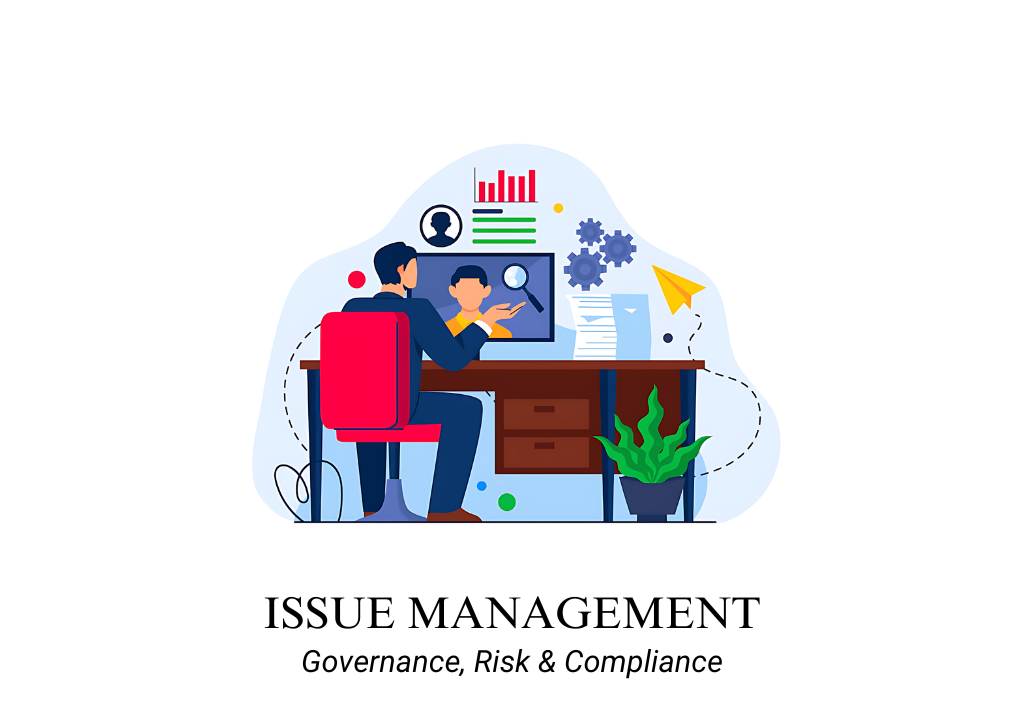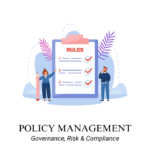Introduction
Issue Management is a vital functionality within Governance, Risk, and Compliance (GRC) management tools, designed to handle the identification, assessment, tracking, and resolution of issues that may arise within an organization. Effective issue management is essential for maintaining organizational compliance, minimizing risks, and ensuring that incidents are managed in a timely and structured manner.
Issue management within a GRC tool provides a systematic approach to dealing with incidents and issues, from initial reporting through to resolution and post-incident analysis. This functionality supports organizations in detecting and addressing issues early, preventing them from escalating into larger problems that could impact compliance, operational efficiency, or reputation. By automating the process of issue management, GRC tools help organizations ensure that incidents are handled consistently and in accordance with regulatory requirements.
CHECK MORE: Guide to find best Governance Risk and Compliance tools for lawyers
Features of Issue Management
Incident Reporting
Definition: Incident reporting is the process of documenting events or occurrences that deviate from standard procedures, policies, or expected outcomes. This feature within a GRC tool allows employees to report incidents in a structured and timely manner, capturing all necessary details for further analysis and response.
Purpose: The purpose of incident reporting is to provide a formal mechanism for identifying and documenting issues as soon as they occur. A GRC tool facilitates this process by providing a centralized platform for reporting, ensuring that incidents are captured consistently and promptly, which is crucial for timely investigation and resolution.
Use Case: A financial institution uses the incident reporting feature in its GRC tool to document a data breach. Employees can quickly report the incident, providing details such as the time of occurrence, nature of the breach, and affected systems, ensuring that the organization can respond promptly and mitigate further risks.
Benefits:
- Provides a standardized process for reporting incidents, ensuring consistency and accuracy.
- Ensures timely reporting, allowing for prompt investigation and response.
- Centralizes incident data, making it easier to track and manage reported issues.
- Enhances transparency and accountability by documenting all reported incidents.
Issue Assessment
Definition: Issue assessment is the process of evaluating reported incidents to determine their severity, potential impact, and the appropriate course of action. Within a GRC tool, this feature helps organizations prioritize issues based on their risk level and allocate resources accordingly.
Purpose: The purpose of issue assessment is to ensure that all reported incidents are systematically evaluated to understand their potential impact on the organization. By assessing issues, organizations can prioritize their response efforts, ensuring that high-risk incidents are addressed promptly and effectively.
Use Case: A healthcare organization uses the issue assessment feature in its GRC tool to evaluate a reported patient data privacy breach. The tool assesses the severity of the breach based on criteria such as the type of data involved and the number of affected individuals, helping the organization prioritize its response efforts.
Benefits:
- Enables systematic evaluation of issues based on predefined criteria.
- Helps prioritize response efforts by assessing the risk and impact of each issue.
- Supports informed decision-making by providing a structured approach to issue assessment.
- Facilitates resource allocation by identifying high-priority issues that require immediate attention.
Action Tracking
Definition: Action tracking refers to the process of monitoring the steps taken to resolve reported issues, ensuring that all actions are documented, assigned to the appropriate personnel, and completed within a specified timeframe. In a GRC tool, this feature helps organizations manage the resolution process efficiently and transparently.
Purpose: The purpose of action tracking is to ensure that all issues are resolved in a timely and effective manner. By tracking the actions taken to address issues, organizations can ensure accountability, monitor progress, and verify that all necessary steps are completed to mitigate risks and prevent recurrence.
Use Case: A manufacturing company uses the action tracking feature in its GRC tool to manage the response to a safety incident on the production floor. The tool assigns corrective actions to relevant personnel, tracks their progress, and ensures that all steps are completed within the designated timeframe, reducing the risk of similar incidents in the future.
Benefits:
- Ensures accountability by assigning actions to specific individuals or teams.
- Monitors progress in real-time, allowing for timely intervention if needed.
- Enhances transparency by documenting all actions taken to resolve issues.
- Supports compliance efforts by ensuring that all required steps are completed and documented.
Response Measuring
Definition: Response measuring is the process of evaluating the effectiveness of the actions taken to resolve issues and assessing whether the desired outcomes were achieved. This feature within a GRC tool helps organizations analyze the success of their response efforts and identify areas for improvement.
Purpose: The purpose of response measuring is to ensure that the actions taken to address issues are effective in mitigating risks and preventing recurrence. By evaluating response efforts, organizations can learn from past incidents, refine their processes, and enhance their overall issue management capabilities.
Use Case: A law firm uses the response measuring feature in its GRC tool to evaluate the effectiveness of its response to a compliance violation. The tool analyzes the actions taken to address the issue, measures their impact on reducing future risks, and provides insights for improving the firm’s compliance management practices.
Benefits:
- Provides insights into the effectiveness of issue resolution efforts.
- Identifies areas for improvement in the organization’s response processes.
- Supports continuous improvement by analyzing the outcomes of past incidents.
- Enhances risk management by ensuring that actions taken are effective in mitigating risks and preventing future issues.
CHECK OUT GRC TOOLS ON DIRECTORY OR CLICK HERE

